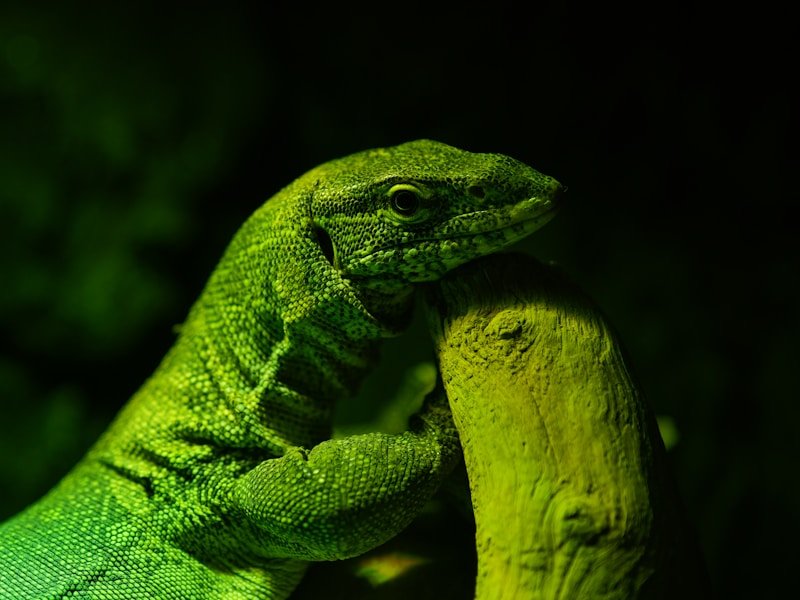Reptiles are among the most diverse and fascinating creatures on Earth. From snakes and lizards to turtles and crocodiles, their behaviors are driven by millions of years of evolutionary adaptation. Although cold-blooded and often misunderstood, reptiles exhibit a range of complex behaviors that help them survive in challenging environments. Understanding why reptiles behave the way they do sheds light not only on their biology but also on the intricate balance of nature.
Thermoregulation: Mastering Body Temperature
One of the most defining behaviors of reptiles is thermoregulation — the process of controlling their body temperature. Unlike mammals and birds, reptiles are ectothermic (cold-blooded), meaning they rely on external sources of heat to regulate their internal body temperature. This behavior explains why reptiles are often seen basking in the sun or hiding in the shade.
Basking is a critical behavior, particularly in the morning, as it helps reptiles warm up and become more active. When they become too warm, they retreat into burrows, shade, or water to cool down. This constant adjustment helps them optimize metabolic processes, such as digestion and reproduction. For example, a snake might lie motionless on a sunlit rock to gain energy for hunting. Without thermoregulation, reptiles would be unable to function efficiently in their environments.
Feeding Habits: Predators with a Strategy
Reptiles are primarily carnivorous, though some, like iguanas and tortoises, are herbivores. Their feeding behaviors vary widely based on species, habitat, and prey availability. Many reptiles are ambush predators, relying on stealth, camouflage, and patience. For instance, a chameleon will stay completely still and wait until an insect comes close enough for it to launch its lightning-fast tongue.
Other reptiles, like monitor lizards or snakes such as pythons and boas, actively hunt their prey, using strength, venom, or constriction. Some snakes, like vipers, use heat-sensing pits to detect warm-blooded prey even in the dark. Crocodiles are known for their infamous “death roll,” a method of tearing apart large prey after seizing it at the water’s edge.
Feeding behavior is not only about hunting; it also involves strategies to avoid starvation. Many reptiles can go for weeks or even months without food, especially during colder seasons or dry periods. This remarkable ability to manage energy needs is another evolutionary trait that supports survival in diverse and often harsh ecosystems.
Social Interaction: Solitary but Not Antisocial
While reptiles are often thought of as solitary animals, many do exhibit complex social behaviors, particularly during breeding seasons. Some species, such as certain lizards and turtles, show territorial behavior. Males often engage in physical displays like head-bobbing, push-ups, or tail-whipping to establish dominance or attract mates.
In crocodilians, social interaction is even more advanced. Crocodiles and alligators use vocalizations, body language, and even coordinated group behavior when hunting or defending territory. Female crocodiles are known to guard nests and even help their hatchlings reach the water, displaying a level of parental care rare among reptiles.
Despite these examples, most reptiles live solitary lives. This behavior minimizes competition for resources and helps reduce the risk of predation. However, during the breeding season, even the most solitary reptiles will actively seek out mates, often traveling long distances and engaging in combat with rivals.
Defense Mechanisms: Survival Through Adaptation
Reptiles have evolved an impressive array of defensive behaviors to avoid predation. These range from physical adaptations to behavioral tactics. Camouflages is perhaps the most widespread defense. Many reptiles, such as geckos and horned lizards, blend into their surroundings to avoid detection.
When camouflage fails, some reptiles rely on intimidation. Cobras, for example, spread their hoods and hiss to appear larger and more threatening. Bearded dragons puff up and darken their throats, while frilled lizards display a wide, colorful frill around their heads. Tail autotomy, or the ability to drop the tail, is another defense seen in many lizards — the detached tail continues to wriggle, distracting predators while the reptile escapes.
Chemical defenses are also found in species like skinks, which can secrete foul-smelling substances, or venomous snakes that use toxins to incapacitate prey and deter attackers. Even turtles, though slow, use strong shells and powerful bites as last-resort defense tools.
In conclusion, reptile behavior is a fascinating study in adaptation and survival. From regulating body heat and hunting strategies to complex social cues and defense mechanisms, every behavior serves a purpose rooted in survival and reproduction. Far from being primitive, reptiles are finely tuned creatures, each behavior a testament to millions of years of evolution. Understanding what reptiles do — and why they do it — helps us appreciate their critical role in the natural world.

